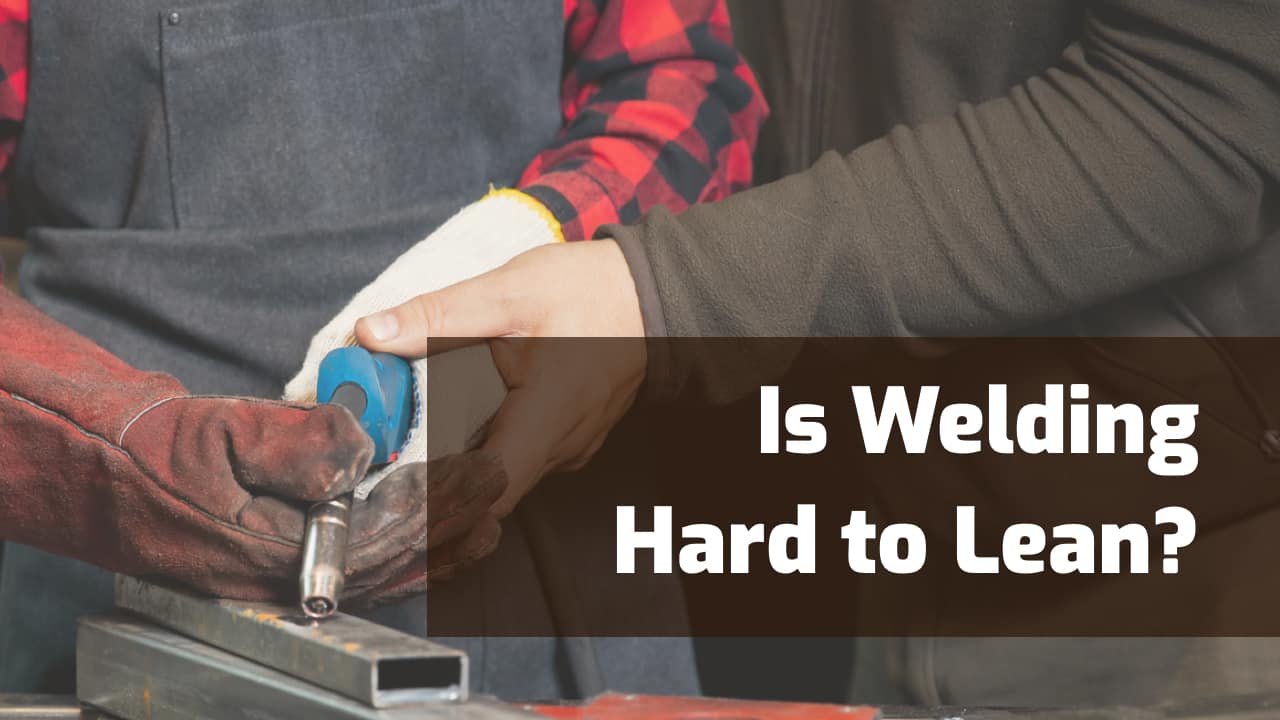Learning to weld ranges from moderate to difficult, depending on your previous experience and the kind of welding you want to do.
For example, it’s less challenging to learn as a hobbyist or DIYer for simple repairs. The welds are simpler and the quality doesn’t have to meet strict standards and codes. But, if you wish to become a certified welder, it takes far more effort.
Don’t expect to weld pipes in a 6G position on day one, but you can make a nice, simple bead after one day of training. Constant progress along the way encourages you to keep going and try new things and you improve with every minute of practice.
What Will Make Welding Easier to Learn?
Access to sound knowledge, a good teacher, quality welding equipment, plenty of scrap material, consumables, a few accessories, and plenty of practice time (a.k.a. free time) will make welding easier to learn.
If you have access to even more resources, you can make the learning process faster and easier. So, let’s discuss how to use what you have available to your advantage.
The Right Knowledge
You won’t achieve much if you keep doing things wrong. For example, you can’t make a good-looking weld if your machine’s polarity is set wrong. That’s why having access to the proper knowledge makes learning faster. You won’t make as many mistakes or get stuck in a loop of errors and defective welds.
So, it’s a good idea to enroll in a welding school, but we’ll discuss this option later in the article. However, formal education is not the only way to access the proper knowledge.
Online courses, YouTube videos, books, and online blogs significantly improve the learning pace. Just make sure you use reputable sources to learn. It’s challenging to correct bad habits once you have learned them, so learn the right way from the start.
A Good Teacher
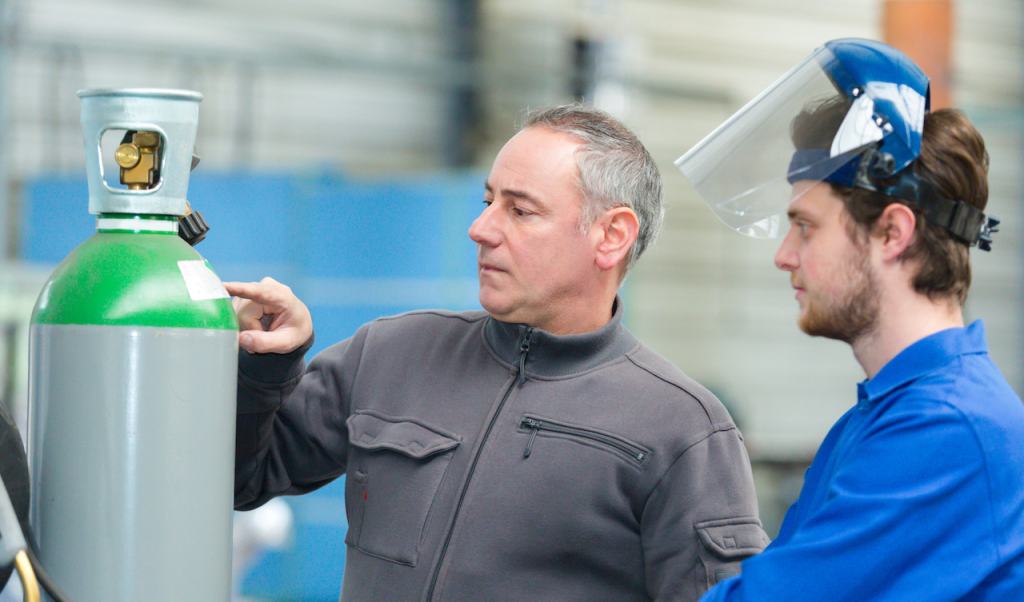
Did you know that many critical welding jobs don’t require a formal education? All it takes is certification, and you don’t need a diploma to pass a certification test. But you need welding skills.
Many great welders never went to welding school but had a good mentor. The value of an experienced helping hand cannot be overstated.
So, if you know someone who is a professional welder willing to share their knowledge, you can drastically improve your skills. You will find most experienced welders are very busy, but you can still ask for pointers every now and then. This will help correct learned mistakes you are bound to acquire, especially if learning on your own.
Quality Equipment
Having costly equipment is not a requirement. But, learning is easier if your welder has a stable arc and helpful features for beginners, like automatic settings and digital display.
Additionally, using an auto-darkening welding helmet, not a hood you must flip up and down manually, requires less effort and lets you focus on your weld.
Also, gear like clamping magnets, clamps, and a welding table make the learning process less cumbersome. If you are a beginner, do yourself a favor and get these essential tools because welding requires clamping to hold the welded pieces together.
Practice Time
The more time you dedicate to practicing, the better you will get. This is a simple, universal law of the welding trade. Welding schools emphasize “time under the hood” as a part of their curriculum for a reason. No one becomes a good welder just by reading or watching videos.
Networking
Don’t overlook welding and fabrication expos or similar events. You should try to meet and exchange knowledge with people in the metalworking trades. There is always something new to learn. But, most importantly, you will learn what you don’t know.
The most experienced craftsmen have a lot to say, especially to beginners and intermediate welders. So, by attending events and listening to them, you can learn everything from filler metal selection to why stainless steel may lose corrosion resistance. Such events are perfect for identifying your knowledge gaps and figuring out what to research next.
Can You Teach Yourself to Weld?
Sure, you can teach yourself to weld. But how long it will take and what skill level you will achieve is tough to estimate.
So, the actual question should be, can you teach yourself to weld and pass certification tests? And yes, you can do that, too.
But, it would take a long time and incredible effort to figure out your mistakes and how to correct them.
If you are a hobbyist who wants to learn how to weld for simple DIY projects, the answer is a resounding yes. You don’t need anyone to work with you as part of your education. YouTube and books are fine.
But, you shouldn’t weld critical structures until you test your skills in a certification lab.
Most hobbyist welders could never pass these tests. Their welds are porous and have varying depth of penetration, undercut, arc strikes, hard spots, slag inclusions, cracks, and other issues you don’t have to worry about for a quick DIY repair. So, hobbyists should not weld structures that can jeopardize anyone if the welds were to fail.
However, if you decide to pursue welding as a career, you won’t teach yourself enough to weld at the necessary level. You can start n the trade as a self-taught welder, and you will quickly meet other trained welders and learn from their experiences. The faster you interact with more experienced welders, the sooner your skills grow.
Quickest Way to Learn How to Weld
There are two ways to learn how to weld faster than practicing in your garage and using YouTube as a mentor. One is to get a job in a welding shop. Another is to enroll in a welding school. These are the quickest ways to acquire fundamental skills.
Getting a Job As an Apprentice
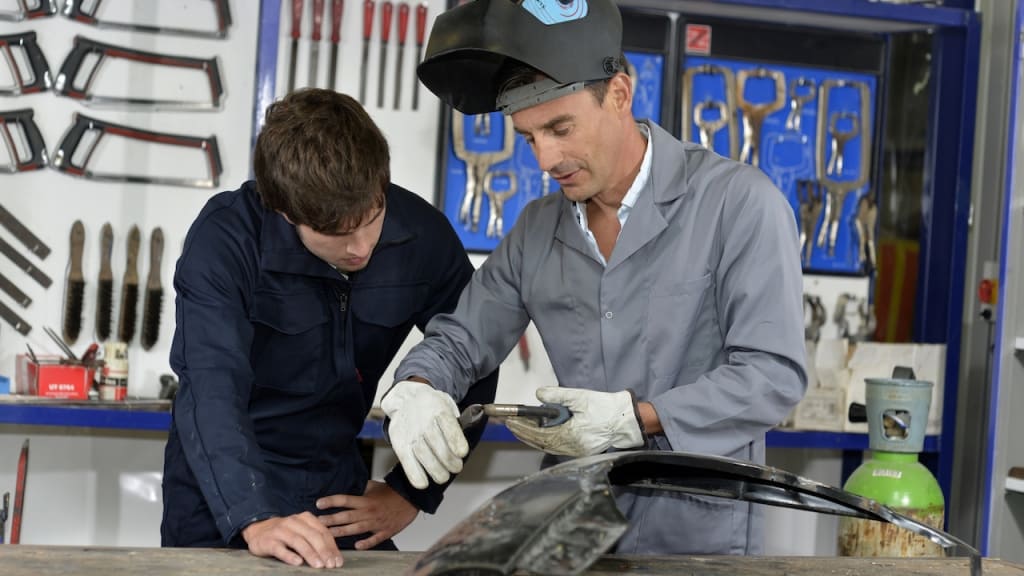
Apprentices earn while they learn. That’s quite the motivation for many younger guys/gals who see themselves in the welding trade. If you want to “skip” the welding school and learn the ropes as a helper, don’t ignore apprenticeship programs.
You can land such a job simply by calling the local metal fabrication businesses and asking if they need a helping hand. But, you must express your desire to learn to be taken seriously. Also, don’t expect a high salary if you approach a small welding shop seeking an apprenticeship.
But, there are better ways to get a learning opportunity—many unions like “Ironworkers Local 75” offer guided programs for beginners. Plus, you are likely to get a well-paid apprenticeship if you go through a union.
Many apprenticeship programs require basic welding skills as a minimum. So, you may need to attend a local welding school for a few days. But, some programs do include this basic training. Also, there are some programs requiring previous welding job experience. So, it does depend on what’s available to you locally. Check the details carefully.
Welding School
While people who aspire to take a career in welding benefit from apprentice programs, even hobbyists can benefit from a welding school.
There are two ways to approach formal welding education, as a weekend-warrior looking for guidance or as someone looking for a welding career. In other words, you can benefit from a welding course or a comprehensive program no matter your experience.
If you want to learn how to weld stuff around the house, many high-profile welding schools have short courses set up for that. These are meant to teach you the basics of safety and welding and provide you a solid foundation to build your skills upon.
For example, Lincoln Electric’s “Weekend with Metal” course costs around $230, and it teaches better than any YouTube video ever will.
On the other hand, if you are serious about the welding trade, welding schools from Lincoln Electric, Hobart, and Tulsa Welding School (“TWS”) are your best bet. Places like TWS are where you’ll find your welding family, plus plenty of support, to help you set and achieve your career goals.
Many welding school students attend fresh out of high school and they gain extensive experience with all the various welding processes.
But welding schools also prep you for heavy-duty work in challenging environments. You learn how to weld pipe like a professional and other things like automation and structural welding.
But most importantly, you make life-long connections with the most influential people in the trade, your instructors. They will help you in your career, even after completing the program.
No instructor worth their salt abandons their students. Big welding companies that weld oil rigs, boilers, pipelines, etc., continuously approach reputable welding schools and professors seeking undiscovered talent. That’s why forming solid bonds with educators is powerful for your career.
So, whether you are a hobbyist or an aspiring tradesman, you should consider a welding school. Luckily, there are thousands of welding programs in the USA.
So, even if you can’t enroll in a big welding institution like TWS, every local community college has a welding program and most instructors are highly motivated to teach.
What is the Easiest Welding Process to Learn?
The MIG welding process has a significantly lower learning curve for an absolute beginner than the TIG or stick welding processes. This does depend on your style and previous experiences, but the MIG welding process is usually the easiest to learn..
Metal Inert Gas – MIG Welding
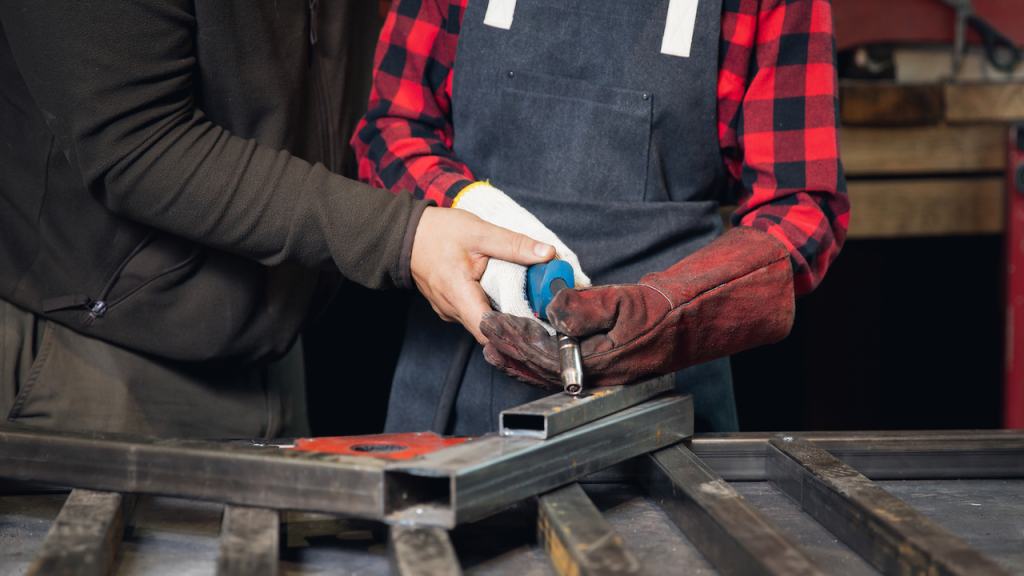
MIG welding, also known as “gas metal arc welding” (“GMAW”), requires simple torch manipulation. Plus, the MIG torch supplies the welding wire, that acts as both a filler metal and an electrode, and a shielding gas to protect the molten metal from the atmospheric gasses. As an electrode, the feed wire also supplies the electrical arc that melts the metal.
GMAW process must use a shielding gas. The gas bottle connects with a tube to the welding machine, which supplies gas when you press the torch button. There are many shielding gasses, but 100% CO2 and a CO2/Argon mixture are the two most commonly used.
The MIG welding process is best suited for sheet metal work, like car auto body welding. But, it has wide applications; everything from structural welding to welding pipe.
Flux-cored Welding
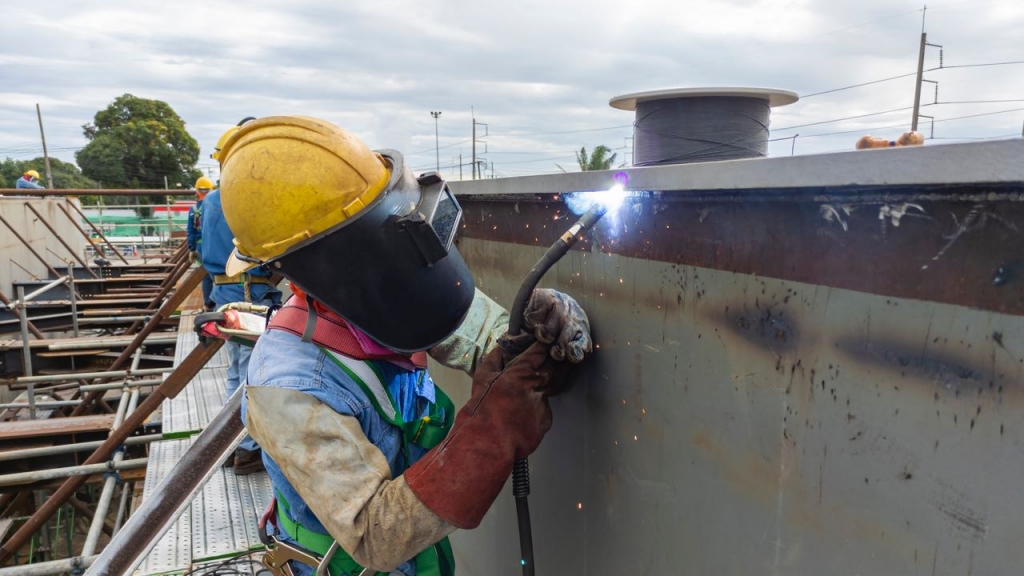
Flux-cored arc welding (“FCAW”) is almost identical to MIG welding but with a few significant differences. It doesn’t require a shielding gas when the FCAW wire is used. But, it provides higher heat output, an erratic arc, and creates less appealing welds.
The FCAW welding process works best for welding thick, structural steel. However, since it doesn’t require a shielding gas, it works well outdoors where the wind can blow away the shielding gas. This is one of the reasons hobbyists like it.
Tungsten Inert Gas – TIG
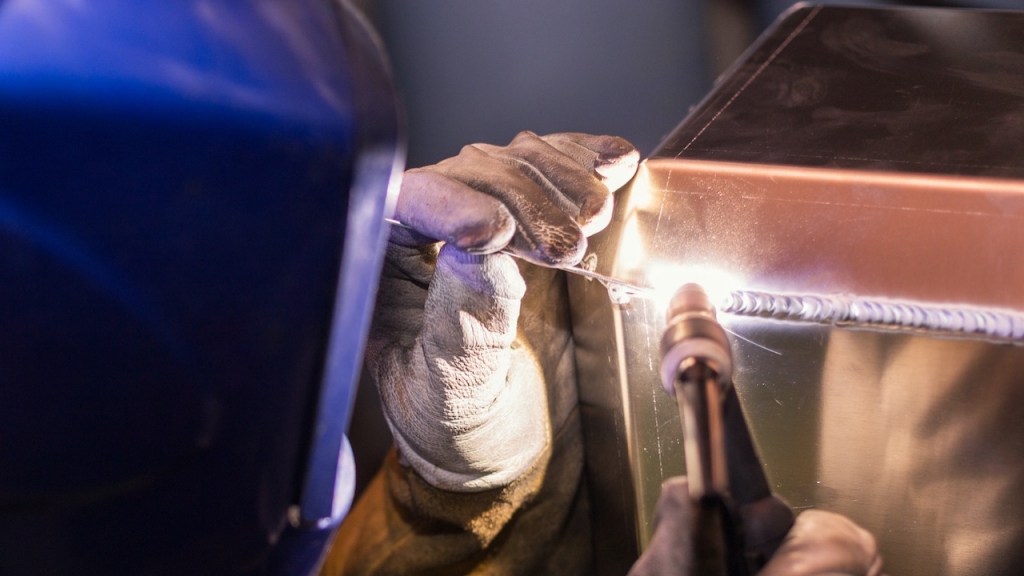
TIG welding, also known as “gas tungsten arc welding” (“GTAW”), is challenging to learn. It requires feeding the filler rod manually with one hand while manipulating a tungsten electrode that must not touch the metal with the other.
Similar to MIG, the TIG welding process requires a shielding gas. usually pure argon but sometimes argon blended with helium. This is the most sophisticated arc welding process but it creates the highest quality welds. If you were ever flabbergasted by clean, beautiful welds, chances are that the GTAW welding process was what made them.
Stick Welding
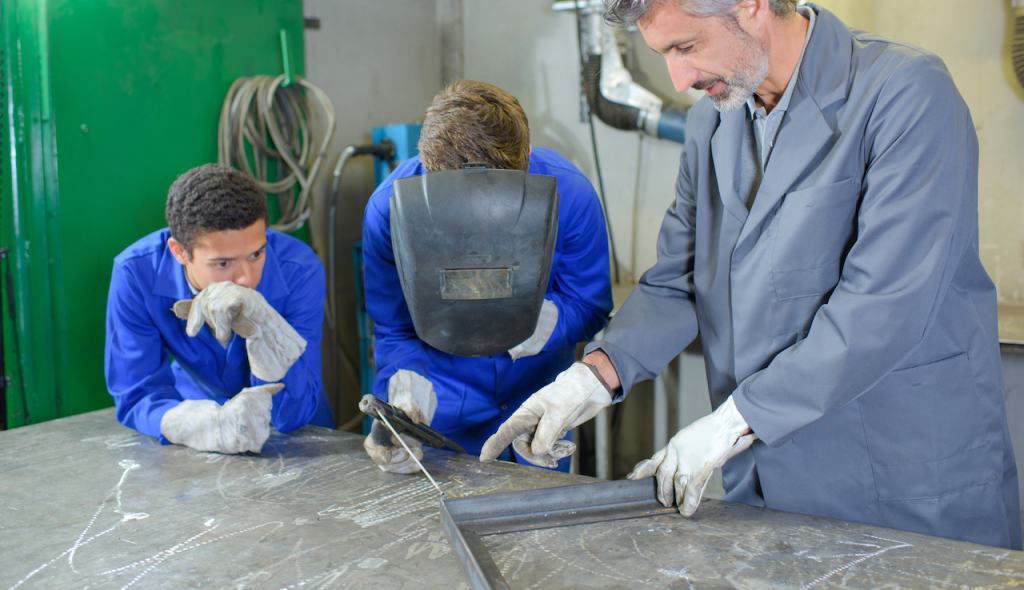
Stick, or “shielded metal arc welding” (“SMAW”), also referred to as “manual metal arc” (“MMA”), is a challenging and robust welding process. It takes a lot of skill to keep the stick welding electrode slightly above the metal, all while the stick burns away as you manipulate it and move forward.
This welding process doesn’t require a shielding gas because the flux coating on the electrodes acts as a shielding agent. But as the flux burns, it forms a protective slag on the weld and this slag needs to be removed, especially when making multi-pass welds.
Is Being a Welder Hard
Welding is hard for people that don’t “live the welder’s life.” A welding career chooses you as much as you select it. So, unless you love welding, the chances are that you will find it hard.
Luckily, most people sense that welding is their true calling early on. That’s when an apprenticeship or a short welding course is a great way to dip your toes into welding early on.
After spending a week or so with most of your time under the hood, you will know if welding is for you. This is tough to explain, but professional welders enjoy the “alone time” when they put the hood down and weld. It’s just them and the arc. You just love it or you don’t, and it doesn’t take long to see if “spending your life under the hood” seems like a good idea to you.
But, many welders start as hobbyists, too.
So, if you feel the urge to weld, we encourage you to get that first welder, put on your safety gear, strike a few arcs, and make those first welds.
Even if you decide that welding is not for you, “wielding power” to fix things around your home or for your friends and family is always a welcomed skill.
